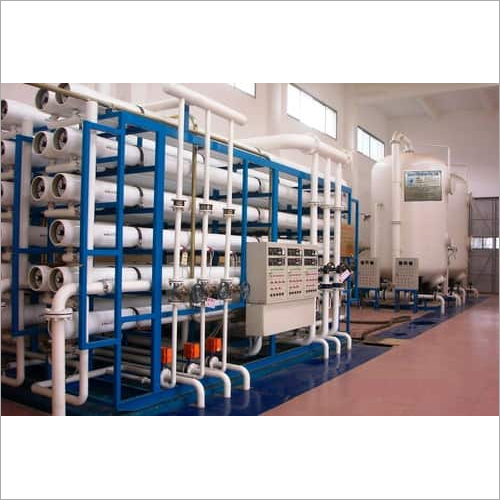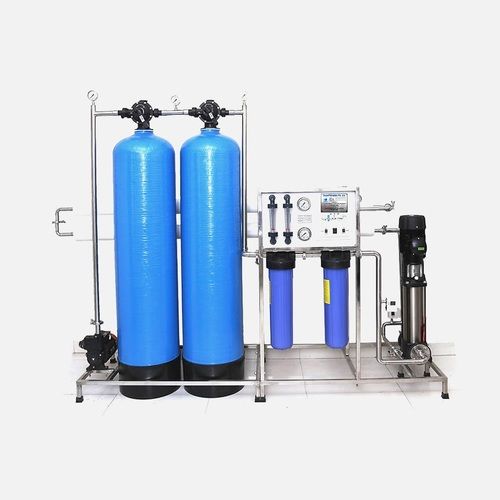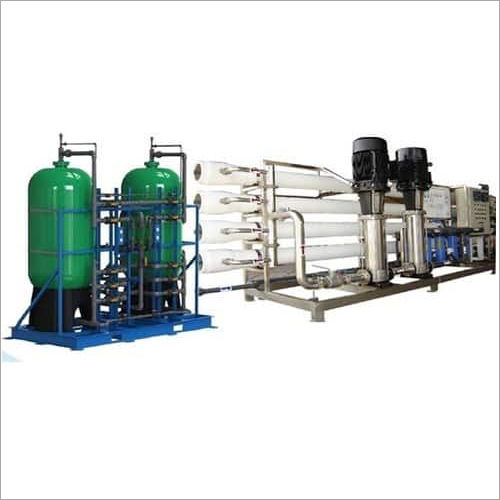- Home Page
- Company Profile
-
Our Products
- Reverse Osmosis Plant
- Jar Washing and Filling Machines
- Mineral Water Plant
- Bottle Filling Machine
- Soda Soft Drink Plant
- Water Softening Plant
- Demineralization Plants
- EDI / Electrodeionization Process Plant
- Ultra Filtration System
- Pet Blow Moulding Machine
- BOPP Labelling Machine
- Bulk Shrink Machine
- Effluent Water Treatment Plant
- UV / Ultraviolet Disinfection System
- Swimming Pool Filtration Plant
- Pressure Booster System
- ISI/BIS Laboratory
- Sewage Treatment Plant
- Batch Coding Machine
- Glass Filling Machine
- Mixed Bed System
- Water Chiller
- Mixed Bed Deionizer
- Soda Filling Machine For Pet Bottle
- Mineral Water Filling Machines
- Bulk Shrink Wrapping Machine
- Swimming Pool Sand Filtration System
- UV Disinfection System
- More Info
- Contact Us

Reverse Osmosis System
210000 INR/Unit
Product Details:
- Water Source Ground Water
- Voltage 220V/50Hz Watt (w)
- Click to view more
X
Reverse Osmosis System Price And Quantity
- 210000 INR/Unit
- 1 Unit
Reverse Osmosis System Product Specifications
- Ground Water
- 220V/50Hz Watt (w)
Reverse Osmosis System Trade Information
- 1 Unit Per Day
- 30 Days
Product Description
Reverse osmosis is an increasingly popular solution in water purification. In many cases it has replaced conventional chemical deionisers. RO is popular because it removes the requirement to hold aggressive regeneration chemicals at the clients premises. It also does not produce a chemical effluent discharge. To many industries the security of an RO membrane is attractive as is the ability to readily validate the performance of the membrane.
Our Reverse Osmosis Systems are some of the best on the market and operate at a reliable 70% efficiency with low energy membranes. So in other words, for every 100ml of impure water you put through the system, you get 70ml of pure water to service.
This is a pretty good ratio. You may find some companies promising you 80% efficiency, but you should be careful of these, as it simply means that their systems force the membranes to work harder. The result is that the membranes do not last as long and need to be replaced more frequently, thus reducing the overall cost effectiveness of the system. You should also be very careful of cheaply marketed Reverse Osmosis System, as not all RO processes are created equal. We have come across bargain basement systems that have an efficiency of 25% or less. These are simply not worth your money and time.
Our Reverse Osmosis Systems are some of the best on the market and operate at a reliable 70% efficiency with low energy membranes. So in other words, for every 100ml of impure water you put through the system, you get 70ml of pure water to service.
This is a pretty good ratio. You may find some companies promising you 80% efficiency, but you should be careful of these, as it simply means that their systems force the membranes to work harder. The result is that the membranes do not last as long and need to be replaced more frequently, thus reducing the overall cost effectiveness of the system. You should also be very careful of cheaply marketed Reverse Osmosis System, as not all RO processes are created equal. We have come across bargain basement systems that have an efficiency of 25% or less. These are simply not worth your money and time.
Some popular uses of RO are as follows:
1) TDS (total dissolved solids) reduction for high pressure steam boilers.
2) HTM20-30 compliance for hospital purified water systems.
3) Renal Dialysis for kidney patients
4) Instrument sterilisation for hospitals and Dentists
5) TDS reduction and pre treatment to purified water systems
6) Alcohol removal
7) Endoscope sterilisation
8) Pharmaceutical production
9) Potable water production from high saturation bore hole supplies
How Reverse Osmosis Works
The osmosis process is a naturally-occurring phenomenon where less concentrated saline solution tends to migrate to a more concentrated solution. Osmosis occurs everywhere in nature, from our kidneys absorbing water from our blood, to plant roots absorbing water.
A semi-permeable membrane, usually made of thin film polyamide is used to clean water which is pumped past its input side under pressure of up to 15 bar and up to 220 psi in a cross-flow direction. From 15 to 70% of the water that passes through the membrane will do so as permeate, while the remainder leaves the membrane as a concentrate containing 99% + of the feed water TDS.
Reverse osmosis is the same process, but in reverse. This type of system will remove 99% of organic and inorganic contamination.
Pre-treatment
However, Reverse Osmosis does not work on its own. The purification process is only as good as the pre-treatment to the water that is feeding it. There are certain contaminants that will damage Reverse Osmosis, including free chlorine, calcium and magnesium.
So you have to pretreat the freed water with activated carbon to remove the free chlorine and then a water softener to strip out the calcium and magnesium, before it can be put through the RO system.
If you fail to do this, then the free chlorine in the water will degrade the membrane and let organic contaminants through, and the calcium and magnesium will scale the membrane up, reducing its efficiency and working life.
This is the reason many industries consider Reverse Osmosis to be wasteful, time consuming and expensive. The conventional alternative is deionisation.
Applications for Reverse Osmosis
Reverse osmosis systems are typically used to treat surface, ground and brackish water from small to large flows. Many industries use the reverse osmosis system to treat their water. These industries include metal finishing, boiler feed water, semiconductor manufacturing and pharmaceutical.
Wychwood Water needs the contact information you provide to us to contact you about our products and services. You may unsubscribe from these communications at anytime. For information on how to unsubscribe, as well as our privacy practices and commitment to protecting your privacy, check out our Privacy Policy.
Vulnerabilities
All RO systems depend on good pre treatment to the feed water. This is achieved by the use of Organic Scavengers, Activated carbon media and base exchange Water Softeners. It is true to say that excellent pre treatment is a requirement for long, reliable and efficient Reverse Osmosis operation.
Reverse Osmosis membranes will not tolerate any form of hydraulic shock. It is important that RO is installed in a carefully designed purified water system with all of the necessary safeguards and monitoring.
This is where an ongoing partnership with the experts at Wychwood Water Systems will pay dividends.
Chemical attack happens when a membrane comes into contact with an oxidiser like chlorine, which will burn the membrane and effect performance. Activated carbon is a pre requisite for this purpose.
Benefits and Disadvantages
Reverse Osmosis System effectively removes contaminants like pyrogens and colloids, and is easy to monitor and confirm performance.
The waste stream, (concentrate) is flushed to drain during plant operation. Because of this 70% of the feed water is recovered as purified water, (permeate).
Common Mistakes Made With Reverse Osmosis Systems
Why do mistakes happen?
A Reverse Osmosis system only works properly if three factors are taken into consideration:
1) Correct professional installation
2) Thorough pre-treatment of water to remove inorganic and chemical contaminants
3) Regular maintenance of the plant, including cleaning of membranes and replacement where necessary.
It goes without saying, therefore, that mistakes arise to the extent that these three factors are neglected or ignored. Problems arise in reverse osmosis systems in cases where:
1) The plant has been poorly designed or installed incorrectly
2) Input water has been insufficiently treated to remove chlorine, calcium and magnesium
3) Membranes are not regularly cleaned or replaced, or the plant pumps are not sufficiently maintained
Signs there are problems with your Reverse osmosis system
The following should be seen as an early warning sign that something is not completely right with your RO plant. If you notice anything like this through routine monitoring or inspection, get on the phone to one of our engineers right away, before a serious issue occurs.
Reverse osmosis recovery rate is less than 70%:
For any well-designed RO system, 70% recovery of permeate should be the golden standard you should look for. Should it drop below this figure, it should be treated as a Canary in the cage that some maintenance is required. It may be that your membranes need cleaning or replacing, or that you need to get someone in to have a look at the workings of your system.
Membranes are becoming clogged and/or scaled up:
Membranes should be regularly cleaned in order to prevent buildup of organic material or calcium deposits. However, they do also need to be periodically replaced. With a well-designed and operated unit you can realistically expect a three-year life span for your membranes before they should be monitored closely for signs they need replacing. A common (and costly) mistake some businesses make is to replace membranes when a simple cleaning would suffice to improve performance. The inclusion of a CIP rig in your reverse osmosis installation will help extend the active life of your membranes and save money in operating costs.
Ways to maintain peak performance
There are a number of best practices you can adopt to help sustain your RO plant at peak efficiency.
1) Granular Activated Carbon (GAC) can be installed in an automatic backwashing unit such as the FILTERMAT unit for the removal of free chlorine and organic matter
2) Install a generously sized duplex meter pair of controlled release of water softeners, sized at <30 BVH, (bed volumes per hour flow to resin media volume ratio).
3) Install 5-micron absolute rated depth filters for particle and fouling index reduction.
4) Ensure you have adequately sized feed pumps and pipework installation.
5) Install a CIP (clean in place) and disinfection rig for periodic maintenance of the RO membranes.
6) XLE thin film composite RO membranes will provide high flow and low energy consumption
7) A constant softened feed water of < 4ppm hardness will help prevent RO membrane scaling
Is Reverse Osmosis Right for you?
If you are unsure about the benefits of reverse osmosis for your application, our team members can help. They can not only recommend the right system for you, but can also answer your questions about any type of water purification system and technology available.
Product details
| Installation Type | Complete Civil work with Installation |
| Usage/Application | Industrial |
| Brand | Excel Filtration |
| Number of Filtration Passes | 1 |
| Automation Grade | Automatic |
| Material | Stainless Steel |
| RO Capacity | 2000-3000 (Liter/hour) |
Tell us about your requirement

Price:
Quantity
Select Unit
- 50
- 100
- 200
- 250
- 500
- 1000+
Additional detail
Mobile number
Email

 English
English Spanish
Spanish French
French German
German Italian
Italian Chinese (Simplified)
Chinese (Simplified) Japanese
Japanese Korean
Korean Arabic
Arabic Portuguese
Portuguese





